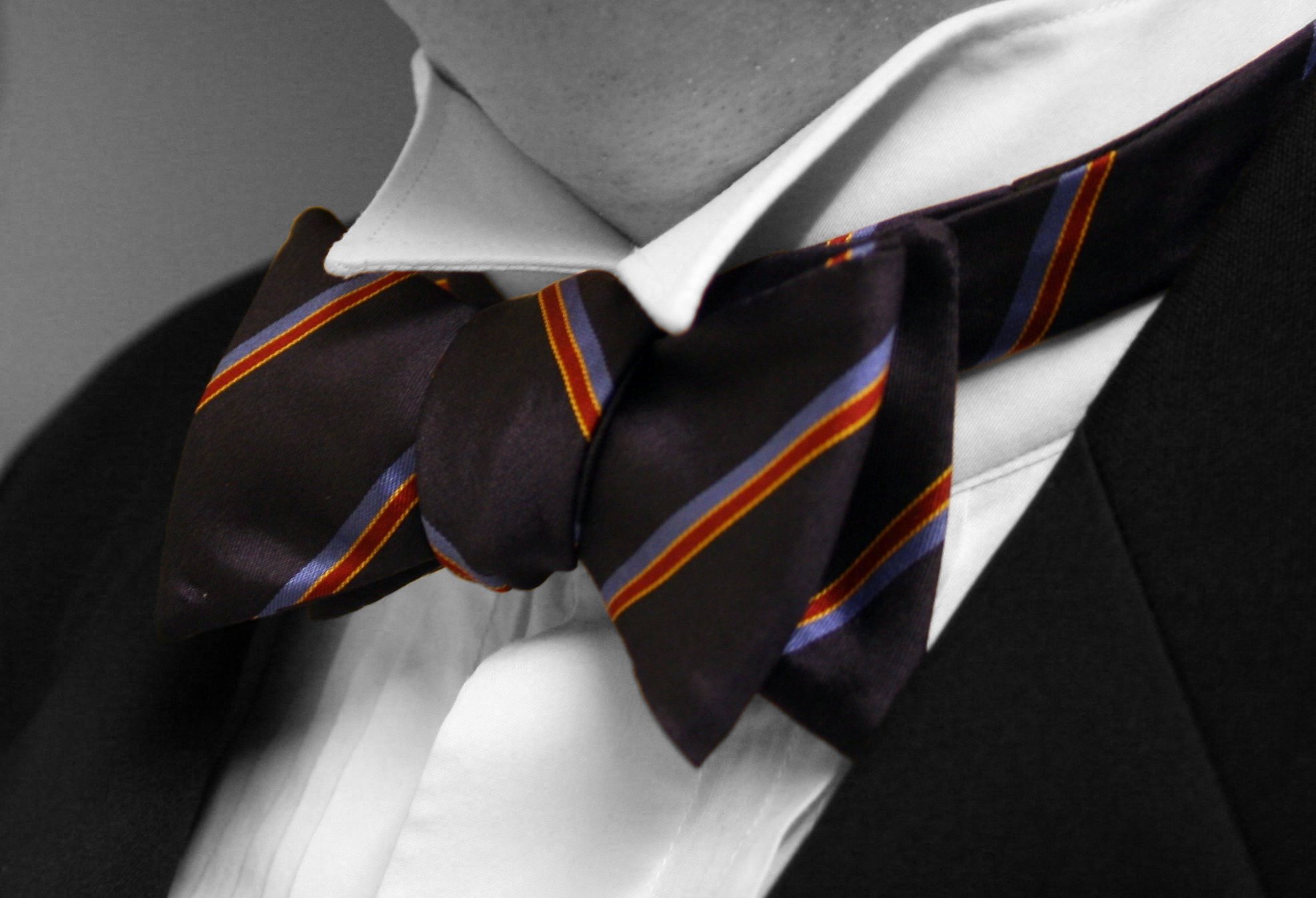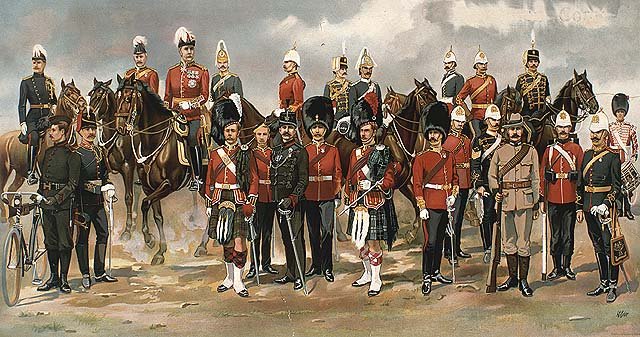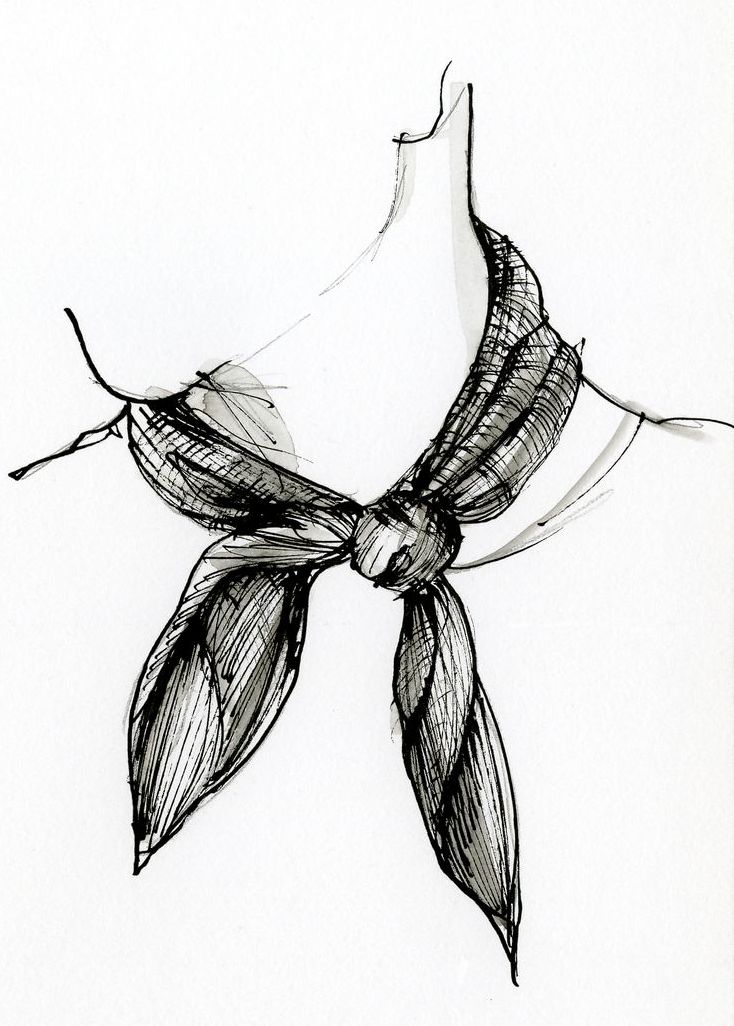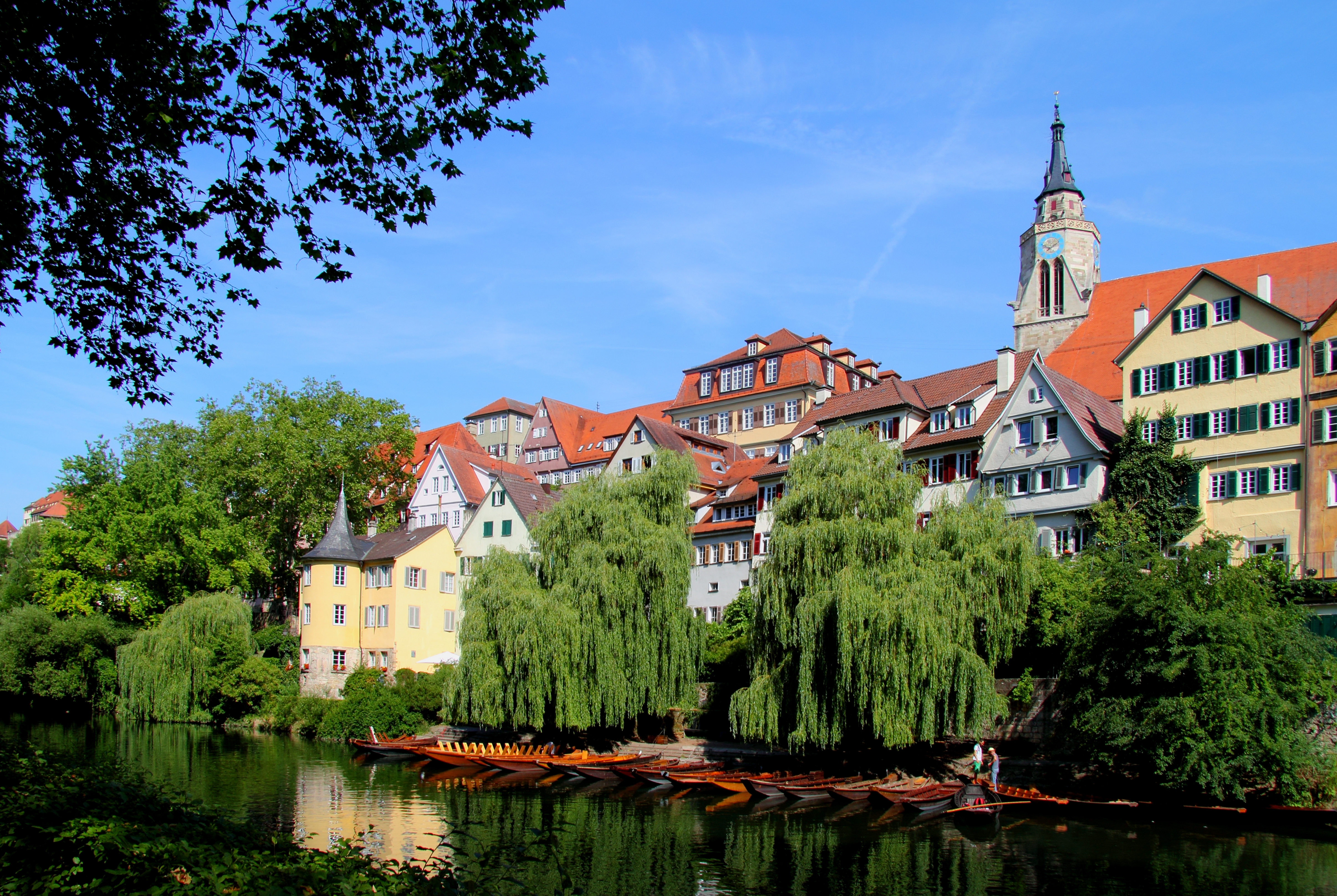|
Necktie
A necktie, or simply a tie, is a piece of cloth worn for decorative purposes around the neck, resting under the shirt collar and knotted at the throat, and often draped down the chest. Variants include the ascot, bow, bolo, zipper tie, cravat, and knit. The modern necktie, ascot, and bow tie are descended from the cravat. Neckties are generally unsized but may be available in a longer size. In some cultures, men and boys wear neckties as part of office attire or formal wear. Women wear them less often. Neckties can also be part of a uniform. Neckties are traditionally worn with the top shirt button fastened, and the tie knot resting between the collar points. History Origins The necktie that spread from Europe traces back to Croatian mercenaries serving in France during the Thirty Years' War (1618–1648). These mercenaries from the Military Frontier, wearing their traditional small, knotted neckerchiefs, aroused the interest of the Parisians. Because of the differe ... [...More Info...] [...Related Items...] OR: [Wikipedia] [Google] [Baidu] |
Bow Tie
The bow tie is a type of necktie. A modern bow tie is tied using a common shoelace knot, which is also called the bow knot for that reason. It consists of a ribbon of fabric tied around the collar of a shirt in a symmetrical manner so that the two opposite ends form loops. There are generally three types of bow ties: the pre-tied, the clip-on, and the self-tie. Pre-tied bow ties are ties in which the distinctive bow is sewn onto a band that goes around the neck and clips to secure. Some "clip-ons" dispense with the band altogether, instead clipping straight to the collar. The traditional bow tie, consisting of a strip of cloth that the wearer has to tie by hand, is also known as a "self-tie", "tie-it-yourself", or "freestyle" bow tie. Bow ties may be made of any fabric material, but most are made from silk, polyester, cotton, or a mixture of fabrics. Some fabrics (e.g., wool or velvet) are much less common for bow ties than for ordinary four-in-hand neckties. Origin and hist ... [...More Info...] [...Related Items...] OR: [Wikipedia] [Google] [Baidu] |
Collar (clothing)
In clothing, a collar is the part of a shirt, dress, coat or blouse that fastens around or frames the neck. Among clothing construction professionals, a collar is differentiated from other necklines such as revers and lapels, by being made from a separate piece of fabric, rather than a folded or cut part of the same piece of fabric used for the main body of the garment. A collar may be permanently attached to the main body of the garment (e.g. by stitching) or detachable. Word usage The Oxford English Dictionary traces ''collar'' in its modern meaning to c. 1300, when collars served as neck-protecting armour. History Today's shirt collars descend from the rectangular band of linen around the neck of 16th century shirts. Separate ruffs exist alongside attached ruffled collars from the mid-16th century, usually to allow starching and other fine finishing, or to make collar-laundering easier.Compare: During the medieval period and sporadically thereafter, people wore ... [...More Info...] [...Related Items...] OR: [Wikipedia] [Google] [Baidu] |
Bolo Tie
A bolo tie (sometimes bola tie or shoestring necktie) is a type of necktie consisting of a piece of cord or braided leather with decorative metal tips (called aiguillettes) and secured with an ornamental clasp or slide. Popularity In the United States, bolo ties are widely associated with Western wear and are generally most common in the western areas of the country. Bolo tie slides and tips in silver have been part of Hopi, Navajo, Zuni, and Puebloan silversmithing traditions since the mid-20th century. The bolo tie was made the official neckwear of Arizona on April 22, 1971 by Governor Jack Williams. New Mexico passed a non-binding measure to designate the bolo as the state's official neckwear in 1987. On March 13, 2007, New Mexico Governor Bill Richardson signed into law that the bolo tie was the state's official tie. Also in 2007, the bolo tie was named the official tie of Texas. In the United Kingdom, bolo ties are known as bootlace ties. They were popular with 1950s Ted ... [...More Info...] [...Related Items...] OR: [Wikipedia] [Google] [Baidu] |
Cravat (early)
The cravat () is a neckband, the forerunner of the modern tailored necktie and bow tie, originating from a style worn by members of the 17th century military unit known as the Croats. The modern British "cravat" is called an "ascot" in American English. From the end of the sixteenth century, the term ''band'' applied to any long-strip neckcloth that was not a ruff. The ruff, a starched, pleated white linen strip, originated earlier in the sixteenth century as a neckcloth (readily changeable, to minimize the soiling of a doublet), as a bib, or as a napkin. A band could be either a plain, attached shirt collar, or a detachable "falling band" that draped over the doublet collar. It is possible that initially, cravats were worn to hide soil on shirts. History According to 1828 encyclopedic ''The art of tying the cravat: demonstrated in sixteen lessons'', the Romans were the first to wear knotted kerchiefs around their neck, but the modern version of the cravat (French: ''la crav ... [...More Info...] [...Related Items...] OR: [Wikipedia] [Google] [Baidu] |
Uniform
A uniform is a variety of clothing worn by members of an organization while participating in that organization's activity. Modern uniforms are most often worn by armed forces and paramilitary organizations such as police, emergency services, security guards, in some workplaces and schools and by inmates in prisons. In some countries, some other officials also wear uniforms in their duties; such is the case of the Public Health Service Commissioned Corps, Commissioned Corps of the United States Public Health Service or the France, French préfet, prefects. For some organizations, such as police, it may be illegal for non members to wear the uniform. Etymology From the Latin ''unus'', one, and ''forma'', form. Corporate and work uniforms Workers sometimes wear uniforms or corporate clothing of one nature or another. Workers dress code, required to wear a uniform may include retail workers, bank and post-office workers, public security, public-security and health-care workers, ... [...More Info...] [...Related Items...] OR: [Wikipedia] [Google] [Baidu] |
Croatia
, image_flag = Flag of Croatia.svg , image_coat = Coat of arms of Croatia.svg , anthem = "Lijepa naša domovino"("Our Beautiful Homeland") , image_map = , map_caption = , capital = Zagreb , coordinates = , largest_city = capital , official_languages = Croatian , languages_type = Writing system , languages = Latin , ethnic_groups = , ethnic_groups_year = 2021 , religion = , religion_year = 2021 , demonym = , government_type = Unitary parliamentary republic , leader_title1 = President , leader_name1 = Zoran Milanović , leader_title2 = Prime Minister , leader_name2 = Andrej Plenković , leader_title3 = Speaker of Parliament , leader_name3 = Gordan Jandroković , legislature = Sabor , sovereignty_type ... [...More Info...] [...Related Items...] OR: [Wikipedia] [Google] [Baidu] |
Neckerchief
A neckerchief (from ''neck'' (n.) + ''kerchief''), sometimes called a necker, kerchief or scarf, is a type of neckwear associated with those working or living outdoors, including farm labourers, cowboys and sailors. It is most commonly still seen today in the Scouts, Girl Guides and other similar youth movements. A neckerchief consists of a triangular piece of cloth or a rectangular piece folded into a triangle. The long edge is rolled towards the point, leaving a portion unrolled. The neckerchief is then fastened around the neck with the ends either tied or clasped with a slide or woggle. Naval Neckerchiefs worn by sailors are shaped like a square, and are folded in half diagonally before rolling, with rolling occurring from the tip of the resulting triangle to its hypotenuse. Either neckerchief is then placed on the wearer's back, under or over the shirt collar with the ends at the front of the wearer. The rolled ends then pass around the neck until they meet in front of it ... [...More Info...] [...Related Items...] OR: [Wikipedia] [Google] [Baidu] |
William Tecumseh Sherman
William Tecumseh Sherman ( ; February 8, 1820February 14, 1891) was an American soldier, businessman, educator, and author. He served as a general in the Union Army during the American Civil War (1861–1865), achieving recognition for his command of military strategy as well as criticism for the harshness of the scorched-earth policies that he implemented against the Confederate States. British military theorist and historian B. H. Liddell Hart declared that Sherman was "the first modern general". Born in Ohio into a politically prominent family, Sherman graduated in 1840 from the United States Military Academy at West Point. He interrupted his military career in 1853 to pursue private business ventures, without much success. In 1859, he became superintendent of the Louisiana State Seminary of Learning & Military Academy (now Louisiana State University), a position from which he resigned when Louisiana seceded from the Union. Sherman commanded a brigade of volunteers at ... [...More Info...] [...Related Items...] OR: [Wikipedia] [Google] [Baidu] |
Croats (military Unit)
The Croats, also known as Cravats or Crabats, were 17th-century light cavalry forces in Central Europe, comparable to the hussars. The Croats were initially irregular units loosely organized in bands. The first regular Croat regiment was established in 1625. The most notable engagement of the Croats was their participation on the side of the Catholic League in the Thirty Years' War. At the height of the Thirty Years' War, as many as 20,000 Croatian cavalry were in the service of the Imperial Army, including the majority of Wallenstein's harquebusiers. The name came to be used as a generic term for light cavalry from the area of the Habsburg Military Frontier rather than an ethnic designation, and included ethnic Croats, Hungarians, Serbs, Wallachians, Poles, Cossacks, Albanians and Tatars. Initial structure The Croats were initially recruited by generals of the Habsburg monarchy. The soldiers who joined Croats signed contracts which expired after the military campaign w ... [...More Info...] [...Related Items...] OR: [Wikipedia] [Google] [Baidu] |
Dublin
Dublin (; , or ) is the capital and largest city of Republic of Ireland, Ireland. On a bay at the mouth of the River Liffey, it is in the Provinces of Ireland, province of Leinster, bordered on the south by the Dublin Mountains, a part of the Wicklow Mountains range. At the 2016 census of Ireland, 2016 census it had a population of 1,173,179, while the preliminary results of the 2022 census of Ireland, 2022 census recorded that County Dublin as a whole had a population of 1,450,701, and that the population of the Greater Dublin Area was over 2 million, or roughly 40% of the Republic of Ireland's total population. A settlement was established in the area by the Gaels during or before the 7th century, followed by the Vikings. As the Kings of Dublin, Kingdom of Dublin grew, it became Ireland's principal settlement by the 12th century Anglo-Norman invasion of Ireland. The city expanded rapidly from the 17th century and was briefly the second largest in the British Empire and sixt ... [...More Info...] [...Related Items...] OR: [Wikipedia] [Google] [Baidu] |
Tübingen
Tübingen (, , Swabian: ''Dibenga'') is a traditional university city in central Baden-Württemberg, Germany. It is situated south of the state capital, Stuttgart, and developed on both sides of the Neckar and Ammer rivers. about one in three of the 90,000 people living in Tübingen is a student. As of the 2018/2019 winter semester, 27,665 students attend the Eberhard Karls University of Tübingen. The city has the lowest median age in Germany, in part due to its status as a university city. As of December 31, 2015, the average age of a citizen of Tübingen is 39.1 years. The city is known for its veganism and environmentalism. Immediately north of the city lies the Schönbuch, a densely wooded nature park. The Swabian Alb mountains rise about (beeline Tübingen City to Roßberg - 869 m) to the southeast of Tübingen. The Ammer and Steinlach rivers are tributaries of the Neckar river, which flows in an easterly direction through the city, just south of the medieval old t ... [...More Info...] [...Related Items...] OR: [Wikipedia] [Google] [Baidu] |
Como
Como (, ; lmo, Còmm, label=Comasco dialect, Comasco , or ; lat, Novum Comum; rm, Com; french: Côme) is a city and ''comune'' in Lombardy, Italy. It is the administrative capital of the Province of Como. Its proximity to Lake Como and to the Alps has made Como a tourist destination, and the city contains numerous works of art, churches, gardens, museums, theatres, parks, and palaces: the ''Como Cathedral, Duomo'', seat of the Diocese of Como; the Basilica of Sant'Abbondio; the Villa Olmo; the public gardens with the Tempio Voltiano; the Teatro Sociale; the ''Broletto'' or the city's medieval town hall; and the 20th-century Casa del Fascio (Como), Casa del Fascio. With 215,320 overnight guests in 2013, Como was the fourth-most visited city in Lombardy after Milan, Bergamo, and Brescia. In 2018, Como surpassed Bergamo becoming the third most visited city in Lombardy with 1.4 million arrivals. Como was the birthplace of many historical figures, including the poet Caeciliu ... [...More Info...] [...Related Items...] OR: [Wikipedia] [Google] [Baidu] |




.jpg)





